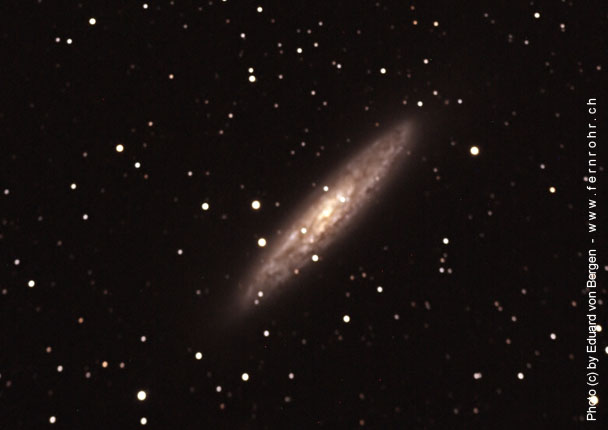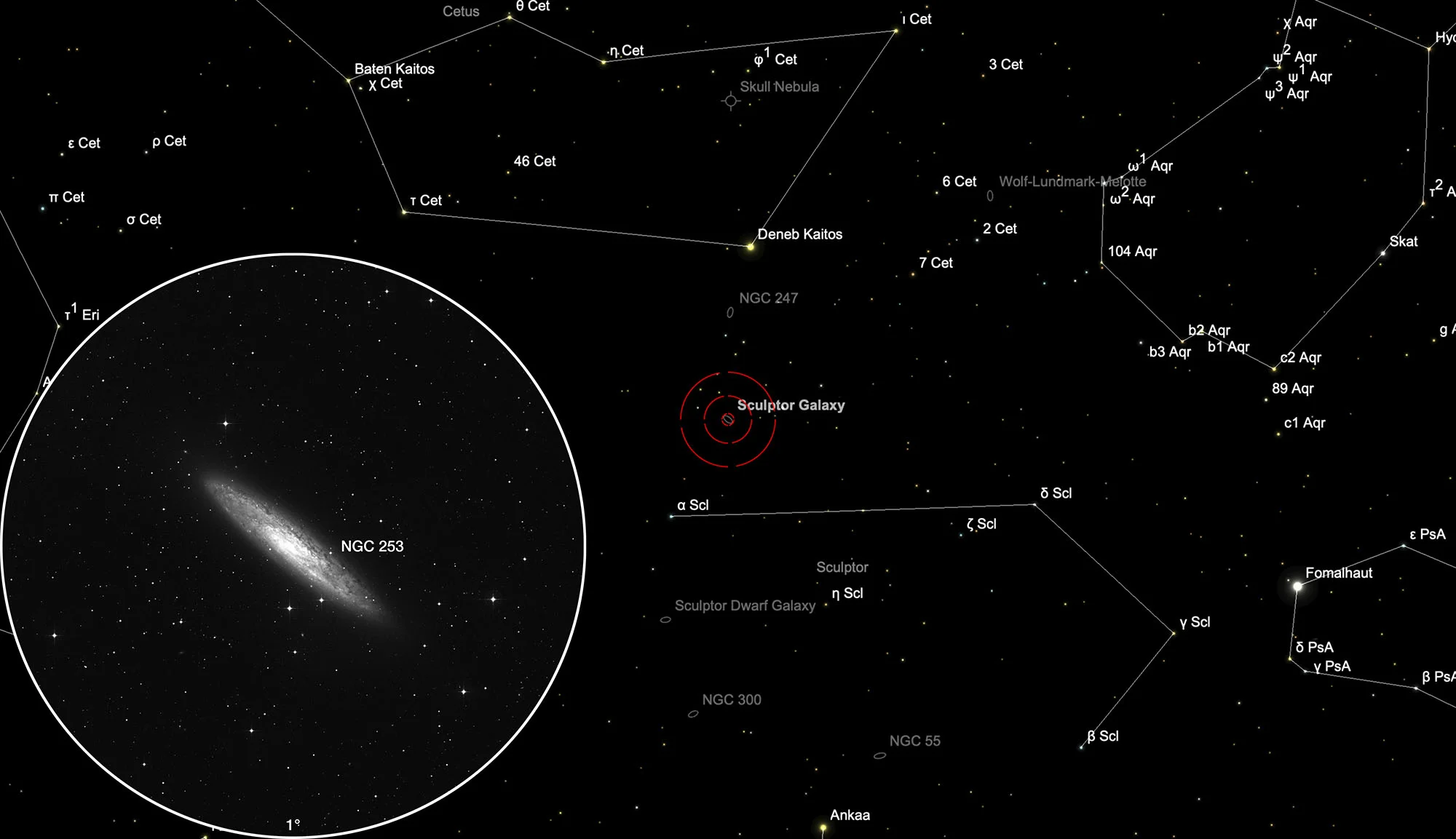Silver Dollar, Sculptor Galaxy (NGC 253)




History
This galaxy was discovered by Caroline Herschel on 23 September 1783 with her Newtonian telescope of 4.2 inch aperture, 27 inches focal length and a power of 30. She was searching systematically for comets. William Herschel catalogued it on 30 October 1783 as V 1 (Class V = very large nebulae) and noted: «Considerably bright, much elongated, south preceding, north following, much brighter in the middle, above 50' length and 7 or 8' broad.» [277, 463]
NGC 253 is also known as the Sculptor Galaxy or Silver Dollar.
Physical Properties
The galaxy is of the morphological type SAB(s)c and a Seyfert galaxy with massive, active star formation. Measured distances range from 3 Mpc to 4.1 Mpc. [145] NGC 253 is one of the brightest and most dusty galaxies in the night sky.
| Designation | NGC 253 |
| Type | Gx (SBc) |
| Right Ascension (J2000.0) | 00h 47m 33.1s |
| Declination (J2000.0) | -25° 17' 15" |
| Diameter | 29 × 6.8 arcmin |
| Photographic (blue) magnitude | 8.0 mag |
| Visual magnitude | 7.2 mag |
| Surface brightness | 12.7 mag·arcmin-2 |
| Position Angle | 52° |
| Redshift (z) | 0.000811 |
| Distance derived from z | 3.43 Mpc |
| Metric Distance | 3.140 Mpc |
| Dreyer Description | !! vvB, vvL, vmE 54°, gbM |
| Identification, Remarks | WH V 1; h 61=2345; GC 138; ESO 474-29; MCG -4-3-9; UGCA 13; Sculptor galaxy, Silver Dollar |
Finder Chart
Deep in the south, the declination of -25° is one of the more difficult to access objects in our northern latitudes. The Sculptor Galaxy in the constellation Sculptor is probably one of the most beautiful and richly structured galaxies that can be viewed from the side. The best observation time is June to March. [192]
Visual Observation
400 mm Aperture: Despite its proximity to the horizon, this galaxy already appears bright and detailed in the 21 mm Ethos eyepiece (85x), so that it is quite possible to magnify a little more and the dust bands become prominent. — 400 mm f/4.5 Taurus Dobsonian, Glaubenberg, 6. 11. 2020 Bernd Nies
